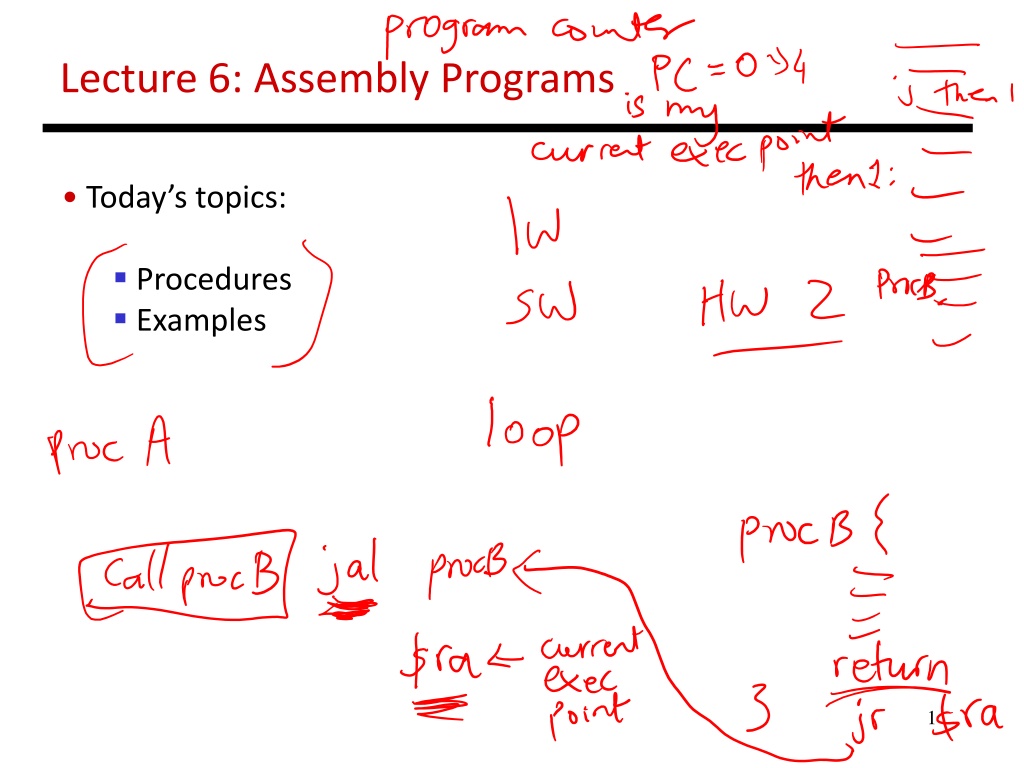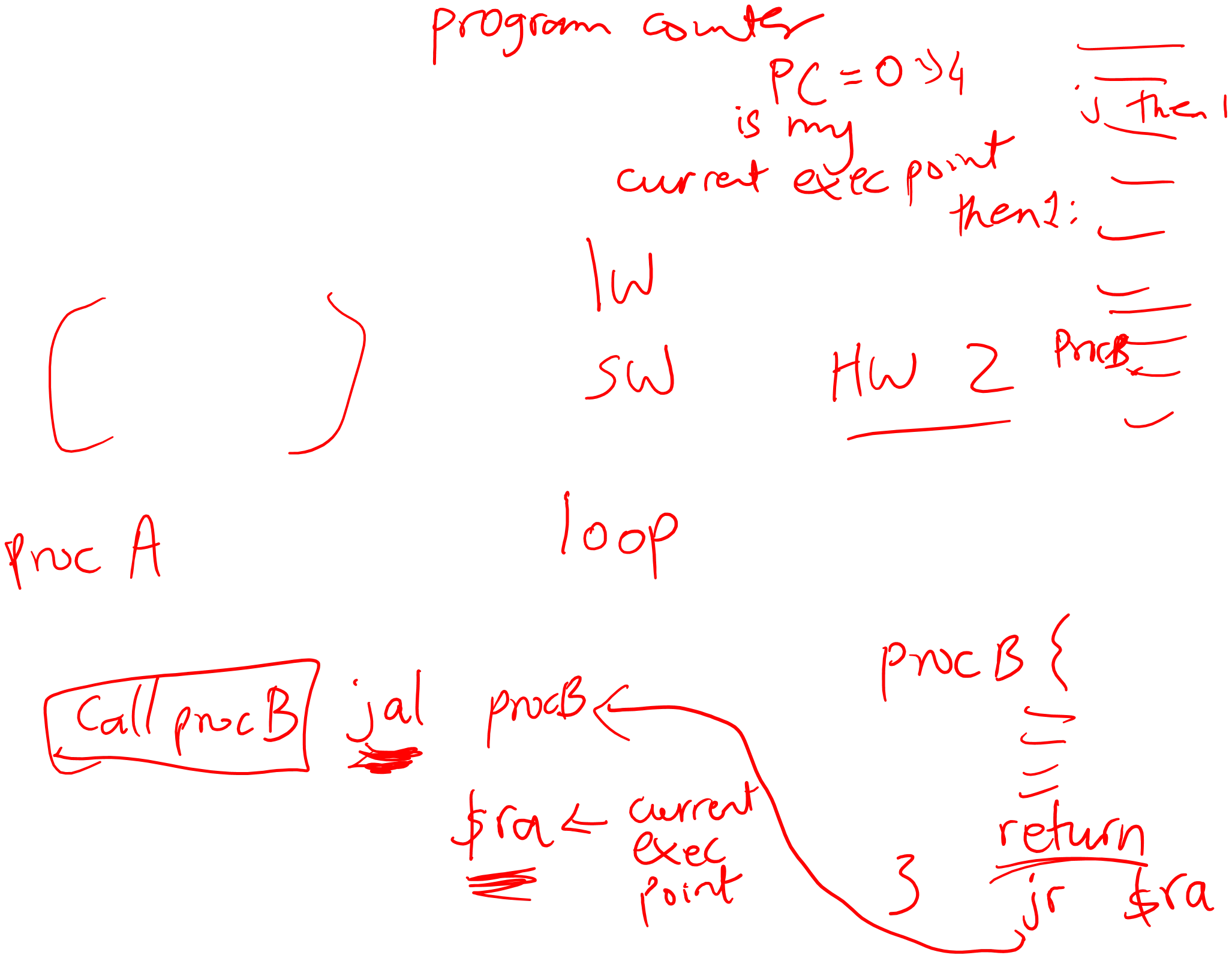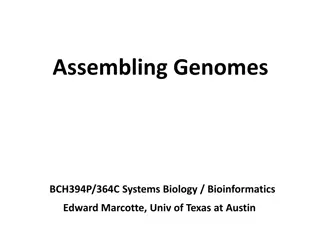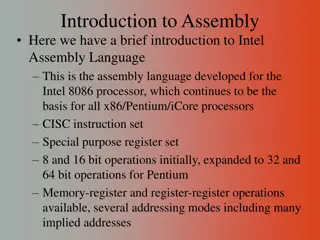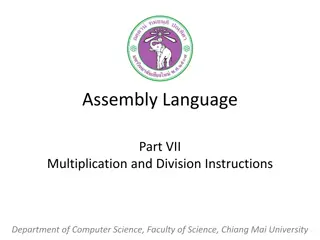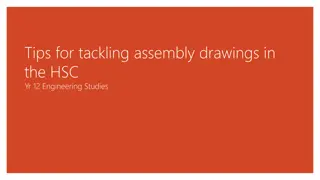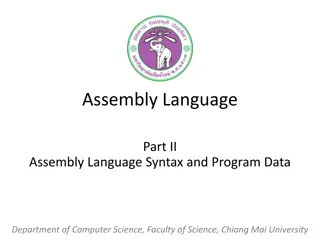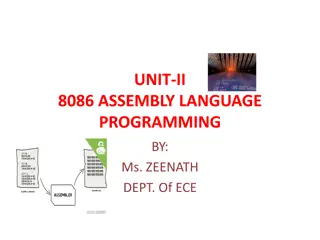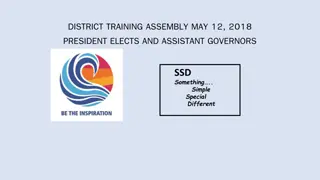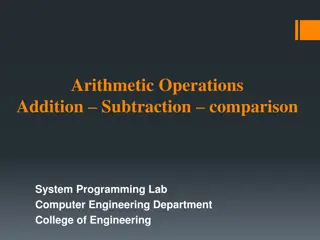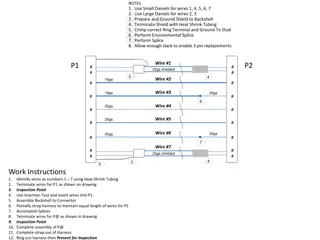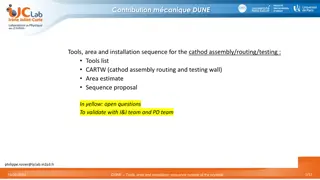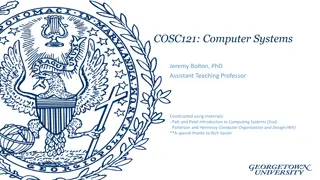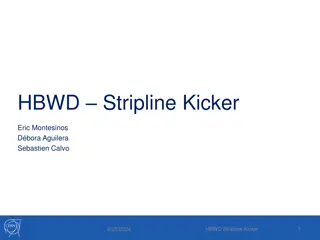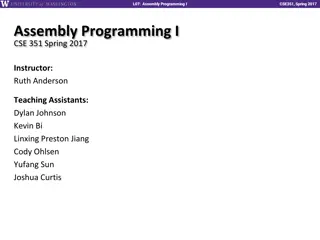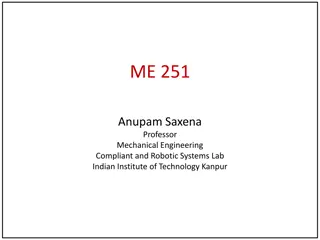Assembly Programs Procedures and Examples
Today's session covers procedures, local variables, register maintenance, control transfer between procedures, stack management, and storage handling during procedure calls and returns in assembly programs. Learn about jump-and-link instructions, the stack's role in storing procedure values, and the importance of saving and restoring relevant values. Dive into the intricate details of managing storage in call/return scenarios.
Download Presentation

Please find below an Image/Link to download the presentation.
The content on the website is provided AS IS for your information and personal use only. It may not be sold, licensed, or shared on other websites without obtaining consent from the author.If you encounter any issues during the download, it is possible that the publisher has removed the file from their server.
You are allowed to download the files provided on this website for personal or commercial use, subject to the condition that they are used lawfully. All files are the property of their respective owners.
The content on the website is provided AS IS for your information and personal use only. It may not be sold, licensed, or shared on other websites without obtaining consent from the author.
E N D
Presentation Transcript
Lecture 6: Assembly Programs Today s topics: Procedures Examples 1
Procedures Local variables, AR, $fp, $sp Scratchpad and saves/restores Arguments and returns jal and $ra 2
Procedures Local variables, AR, $fp, $sp Scratchpad and saves/restores Arguments and returns jal and $ra 3
Procedures Each procedure (function, subroutine) maintains a scratchpad of register values when another procedure is called (the callee), the new procedure takes over the scratchpad values may have to be saved so we can safely return to the caller parameters (arguments) are placed where the callee can see them control is transferred to the callee acquire storage resources for callee execute the procedure place result value where caller can access it return control to caller 4
Jump-and-Link A special register (storage not part of the register file) maintains the address of the instruction currently being executed this is the program counter (PC) The procedure call is executed by invoking the jump-and-link (jal) instruction the current PC (actually, PC+4) is saved in the register $ra and we jump to the procedure s address (the PC is accordingly set to this address) jal NewProcedureAddress Since jal may over-write a relevant value in $ra, it must be saved somewhere (in memory?) before invoking the jal instruction How do we return control back to the caller after completing the callee procedure? 5
The Stack The register scratchpad for a procedure seems volatile it seems to disappear every time we switch procedures a procedure s values are therefore backed up in memory on a stack High address Proc A Proc A s values call Proc B call Proc C return return return Proc B s values Proc C s values Stack grows this way Low address 6
Storage Management on a Call/Return A new procedure must create space for all its variables on the stack Before/after executing the jal, the caller/callee must save relevant values in $s0-$s7, $a0-$a3, $ra, $fp, temps into the stack space Arguments are copied into $a0-$a3; the jal is executed After the callee creates stack space, it updates the value of $sp Once the callee finishes, it copies the return value into $v0, frees up stack space, and $sp is incremented On return, the caller/callee brings in stack values, ra, temps into registers The responsibility for copies between stack and registers may fall upon either the caller or the callee 8
Registers The 32 MIPS registers are partitioned as follows: Register 0 : $zero always stores the constant 0 Regs 2-3 : $v0, $v1 return values of a procedure Regs 4-7 : $a0-$a3 input arguments to a procedure Regs 8-15 : $t0-$t7 temporaries Regs 16-23: $s0-$s7 variables Regs 24-25: $t8-$t9 more temporaries Reg 28 : $gp global pointer Reg 29 : $sp stack pointer Reg 30 : $fp frame pointer Reg 31 : $ra return address 9
Example 1 (pg. 98) [This example does not follow the conventions.] int leaf_example (int g, int h, int i, int j) { int f ; f = (g + h) (i + j); return f; } leaf_example: addi $sp, $sp, -12 sw $t1, 8($sp) sw $t0, 4($sp) sw $s0, 0($sp) add $t0, $a0, $a1 add $t1, $a2, $a3 sub $s0, $t0, $t1 add $v0, $s0, $zero lw $s0, 0($sp) lw $t0, 4($sp) lw $t1, 8($sp) addi $sp, $sp, 12 jr $ra Notes: In this example, the callee took care of saving the registers it needs. The caller took care of saving its $ra and $a0-$a3. Could have avoided using the stack altogether. 10
Saving Conventions Caller saved: Temp registers $t0-$t9 (the callee won t bother saving these, so save them if you care), $ra (it s about to get over-written), $a0-$a3 (so you can put in new arguments), $fp (if being used by the caller) Callee saved: $s0-$s7 (these typically contain valuable data) Read the Notes on the class webpage on this topic 11
Example 2 (pg. 101) int fact (int n) { if (n < 1) return (1); else return (n * fact(n-1)); } fact: slti $t0, $a0, 1 beq $t0, $zero, L1 addi $v0, $zero, 1 jr $ra L1: addi $sp, $sp, -8 sw $ra, 4($sp) sw $a0, 0($sp) addi $a0, $a0, -1 jal fact lw $a0, 0($sp) lw $ra, 4($sp) addi $sp, $sp, 8 mul $v0, $a0, $v0 jr $ra Notes: The caller saves $a0 and $ra in its stack space. Temp register $t0 is never saved. 12
